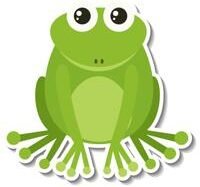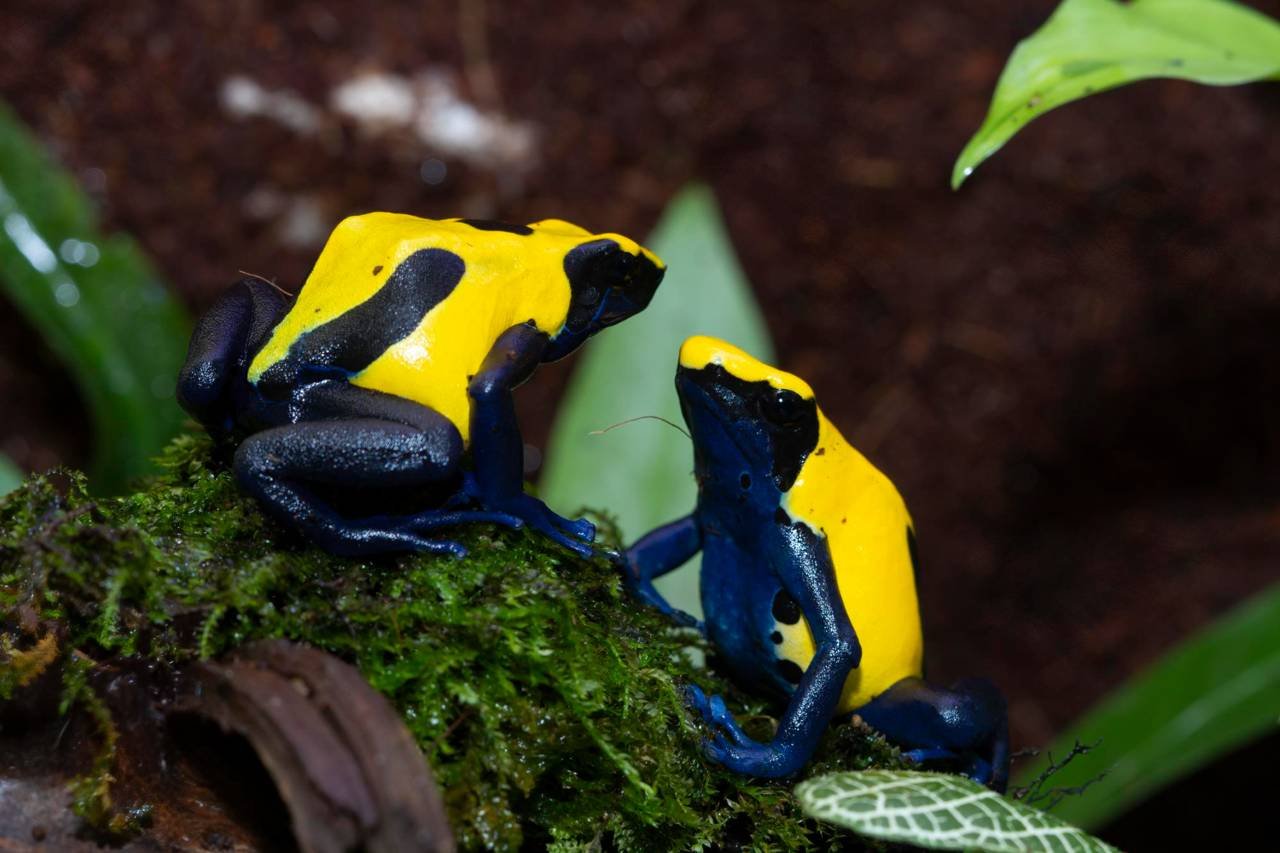The Yellow-banded Poison Dart Frog, scientifically known as Dendrobates leucomelas, is a strikingly colorful amphibian noted for its brilliant yellow and black stripes. Found in the tropical rainforests of South America, particularly in Venezuela and parts of Brazil and Guyana, this frog is not only eye-catching but also plays a significant role in its ecosystem. Let’s explore what makes the Yellow-banded Poison Dart Frog such a fascinating species.
Characteristics and Appearance
The Yellow-banded Poison Dart Frog is recognizable by its distinct yellow bands and black base color, which serve as aposematic signals to ward off predators. This coloration warns potential threats of the frog’s toxicity, an effective defense mechanism in nature. Adults typically reach about 1.2 to 1.5 inches in length.
Habitat and Distribution
These frogs thrive in the humid, tropical rainforests where they inhabit areas close to water sources like streams and creeks. The dense rainforest canopy provides them with the cover and moisture necessary for survival. This environment supports the insects they feed on and offers ideal conditions for their life cycle.
Toxicity and Diet
Yellow-banded Poison Dart Frogs produce potent toxins through their skin, derived from the alkaloids in their diet of ants, mites, and small insects. In captivity, without these specific dietary components, the frogs are not toxic.
Reproduction and Breeding
Breeding occurs during the rainy season, when males call to attract females with distinctive vocalizations. After mating, females lay eggs on moist surfaces, such as leaf litter. Males often play a role in ensuring the eggs remain moist until they hatch. Once hatched, the male transports tadpoles to water bodies, where they continue to develop.
Keeping Yellow-banded Poison Dart Frogs as Pets
Acquisition and Care
For those considering keeping a Yellow-banded Poison Dart Frog as a pet, it is essential to acquire them from reputable sources that practice captive breeding. This supports conservation efforts and ensures that wild populations remain undisturbed.
- Housing:
These frogs require a terrarium that replicates their natural humid habitat. This includes live plants, plenty of places for hiding, and a steady source of water. - Diet:
In captivity, their diet consists of fruit flies, pinhead crickets, and other small invertebrates. Without their natural diet, they do not produce the same toxins. - Legal and Ethical Considerations:
It’s important to be aware of local wildlife laws and obtain necessary permits where applicable. Prospective owners should understand the commitment and responsibility of caring for an exotic pet. - Lifespan:
With proper care, Yellow-banded Poison Dart Frogs can live up to 10 years or more, demanding a long-term commitment from their owners.
Conservation Status
Although not currently endangered, these frogs face threats from habitat destruction and environmental changes. Conserving their natural habitats is imperative to maintaining healthy populations in the wild.
Conclusions
The Yellow-banded Poison Dart Frog, with its vivid colors and ecological importance, exemplifies the diversity and intrigue found within the rainforest. Whether admired as a striking pet or appreciated for its role in nature, understanding and conserving these frogs is essential. To explore more about other mesmerizing poison dart frog species, delve into our comprehensive article on other dart frog species that highlights their unique traits.
For those interested in more light-hearted content, our collection of frog jokes and frog-themed fairy tales offers a delightful and whimsical journey beyond the scientific realm. Join us in celebrating the enchanting world of frogs, where each story and laugh adds to the wonder of these incredible amphibians.
FAQs About Yellow-banded Poison Dart Frogs
Are Yellow-banded Poison Dart Frogs dangerous to humans?
While they possess toxins in the wild, captive frogs without a natural diet pose no threat to humans, as they lack the poisonous alkaloids from their diet.
How should Yellow-banded Poison Dart Frogs be cared for in captivity?
They require a humid terrarium environment with adequate space and diet provisions such as fruit flies and crickets to ensure healthy living conditions.
What do the Yellow-banded Poison Dart Frogs eat in the wild?
In their natural habitat, they primarily consume ants, mites, and other small insects, which provide the alkaloids necessary for toxicity.
Why is it important to acquire frogs from reputable breeders?
Captive breeding helps protect wild populations from poaching and supports efforts to conserve natural habitats while ensuring genetically healthy lines.
What role do Yellow-banded Poison Dart Frogs play in their ecosystem?
They help regulate insect populations and contribute to the ecological balance within their rainforest habitat.

